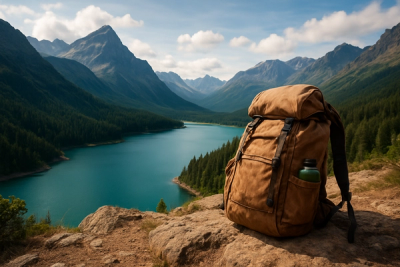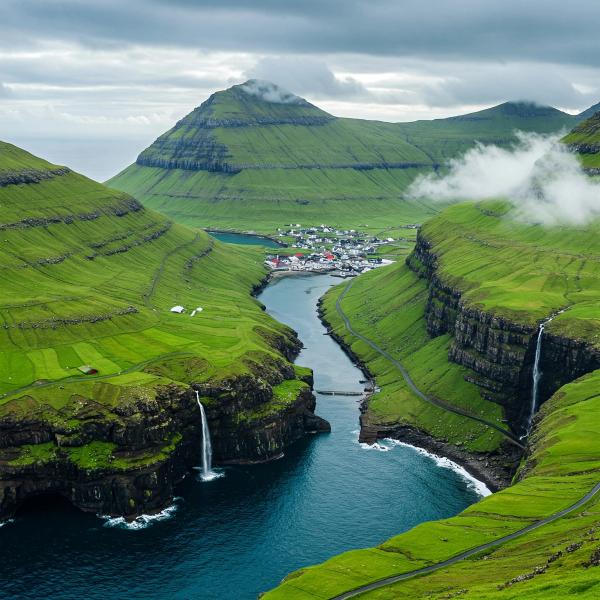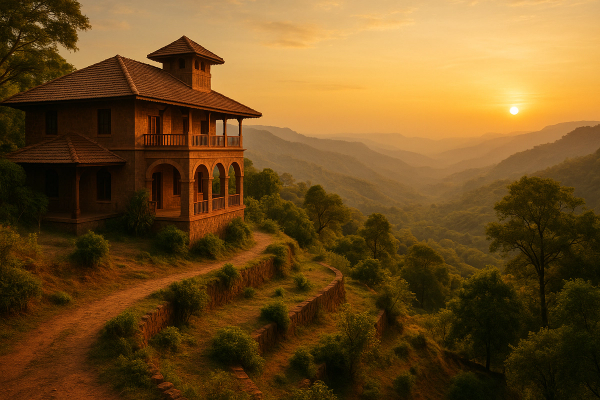India’s Trending Heritage Destinations for 2025 — the trip that actually happened#
I finally did it. I spent early 2025 zig‑zagging across India chasing the places that everyone kept whispering about in travel forums, WhatsApp groups, random chai stalls. Some names I knew by heart (Hampi, Jaipur), some felt new because they suddenly blew up this year (Ayodhya’s crazy crowds after the Ram Mandir opening), and a couple that surprised me for how… quiet they still are despite UNESCO fame (hello, Dholavira). It wasn’t perfect. I got sunburnt, missed a train, overpaid for a tuk‑tuk, cried a lil watching Ganga aarti. Worth it anyway. Totally.¶
Why these spots are trending in 2025 (and yeah, I felt it)#
Quick vibe check from the road. Since late 2023 into 2025, India’s been doubling down on heritage travel: more Vande Bharat trains connecting big culture hubs, easier e‑tickets for monuments, better signage at UNESCO sites, and a big push for homestays and heritage havelis. The Hoysala temples in Karnataka got UNESCO status recently and they’re finally on everyone’s lists. Ayodhya has gone full spotlight since the Ram Mandir inauguration in 2024, and Varanasi’s riverfront corridor is clean and honestly so much more navigable than when I first went years ago. Even Dholavira in Kutch (the Harappan city) has way better visitor info now than it used to. You can feel the shift.¶
- Easier logistics: more online booking for ASI monuments, digital payments literally everywhere (UPI ftw)
- Faster trains between heritage cities, plus tourist circuits that actually make sense now
- New or revamped corridors/temple complexes drawing huge domestic crowds (Ayodhya, Varanasi)
- Sustainable stays and restored havelis trending, especially in Rajasthan and Kutch
My very-chaotic route (don’t judge)#
Started in Bengaluru, dipped into the Hoysala circuit (Belur, Halebidu, Somanathapura), swung north to Hampi, then flew to Gujarat for Dholavira, hopped over to Jaipur, and finally did Ayodhya plus Varanasi. It sounds smooth when I type it but ugh, there were 5 a.m. checkouts, a bus breakdown near Hassan, and me sprinting for a train in Lucknow with my backpack half open. Still, it flowed. Kinda.¶
The Hoysala Temples, Karnataka — stone lace and quiet lanes#
Belur’s Chennakeshava and Halebidu’s Hoysaleswara honestly knocked me flat. The soapstone carvings feel like they’re woven, not carved — jewelry, dancers, horses mid‑gallop, the whole thing. I went early (like 7:30ish) and it was just me, a sleepy dog, and a priest doing aarti. A local guide (700 INR, worth every rupee) pointed out these tiny scenes I would’ve missed. Somanathapura’s Keshava Temple felt even calmer, and the star‑shaped base is wild when you walk it slowly. Bring socks for hot floors — learned that the hard way.¶
- Best bit: hearing the guide tap the pillars to show different notes. It’s nerdy and magical
- Second best: fresh filter coffee in a no‑name joint near Belur bus stand, 20 INR, pure joy
Getting there’s easy from Bengaluru — buses to Hassan run often, then local taxis. Mid‑range hotels in Hassan hovered around 2500–4500 INR a night in Jan–Feb 2025, and smaller guesthouses in Belur were cheaper. Ticket prices for foreigners vary by site, and honestly change sometimes, so I just booked on the ASI portal when I could or paid at the gate (carry a card and some cash).¶
Hampi, Karnataka — yep, she still slaps#
I’d been once ages ago, but Hampi in 2025 felt both familiar and fresher. Virupaksha Temple’s gopuram glows at sunrise, and the boulders catch light like old bronze. I rented a moped, crossed to the hippie island side for lazy idlis by the river, and did a dawn hike up Matanga Hill. Coracle rides on the Tungabhadra are still a thing — I did one at dusk and it got right into my bones, the way the place goes quiet except for birds and the oar hitting water. It gets brutally hot though. Like… drink an electrolyte every hour hot.¶
- Wish I knew: a lot of ruins are spaced out, so a cycle + moped combo day keeps you sane
- Heatwaves are real in April–June 2025 — go sunrise to 10:30 a.m., then 4 p.m. to sunset
- ASI e‑tickets helped me skip a queue or two; bring ID because they sometimes check
Staywise, I paid 1800–3200 INR per night for simple rooms with AC in Feb. There are prettier boutique stays for 5–9k if you’re feeling fancy. Trains to Hospet were packed on weekends — book IRCTC early or risk WL (waitlist) stress. And oh, temple dress codes are enforced more consistently now — cover shoulders, knees, no shoes, keep it respectful.¶
Dholavira, Gujarat — the quiet UNESCO heavy‑hitter#
I don’t know why more people aren’t talking about this place. Dholavira is an ancient Harappan city in the middle of the Rann, all sun‑bleached stone and insane water systems that make you rethink what “old” means. I drove from Bhuj (long day, start at dawn). The interpretation center is actually pretty helpful now — clean displays, maps you can follow without guessing. If you’re into archaeology, it’s goosebumps city. If you’re not, it’s still a beautiful windswept nowhere with a prehistoric heartbeat. Bring snacks, last proper tea stop was ages away.¶
Practical bit: fuel up fully in Bhuj, carry water like you mean it, and check road conditions in monsoon season. Homestays in Kutch villages around 2000–3500 INR are the move — handmade rotlas, whitewashed mud walls, stars so bright you forget your phone exists. I slept like a rock.¶
Jaipur’s Walled City — pink, busy, and easier to love now#
Jaipur always trends, but 2025 felt smoother: more e‑rickshaws, better traffic management around Amber in the early morning. I did the classic loop — Hawa Mahal peep‑through windows, City Palace textiles that made me wanna buy a suitcase, Jantar Mantar’s giant instruments (come with a guide to explain or you’ll just stare and nod). The Govind Devji aarti inside the walled city gets intensely packed; beautiful but prepare for elbows. Panna Meena ka Kund for photos, then hot kachori near Bapu Bazaar, because balance.¶
Haveli stays are having a moment. I snagged a restored one just inside the old city for 5200 INR a night including breakfast in Feb 2025 — airy courtyards, peeling frescoes that they’re restoring slowly, staff who insist you eat more. Peak season weekends spike, so mid‑week is kinder on the wallet. Taxis are easy; UPI payments worked everywhere, even tiny stalls.¶
Ayodhya + Varanasi — devotion, logistics, and long lines#
Ayodhya is intense now. The Ram Mandir consecration in 2024 changed everything — bigger crowds, new hotels, stricter security. I flew into the new airport (Ayodhya Dham) which has decent connectivity from Delhi and Mumbai; weekend prices were steep, so I flew mid‑week and saved a chunk. For darshan, arrive early, like predawn early. No big bags, no power banks, standard security rules — check the official temple updates before you go because procedures do change with festivals and public holidays. It’s emotional even if you’re not religious; I watched a family cry softly after darshan and yeah, I cried too.¶
Varanasi felt more organized than my last trip. The Kashi Vishwanath Corridor is wide and bright, which means the old lanes breathe a bit better. I did the Ganga aarti at Dashashwamedh ghat, then a sunrise boat ride the next morning — soft orange light, laundry slapping stone steps, chai served in little clay kulhads that you break after, no plastic. Hotels on the ghats were 3000–8000 INR for decent rooms in Jan 2025. One tip: winter air can be smoky, bring a mask if you’re sensitive, and watch your pockets in dense crowds.¶
2025 practical stuff I wish someone texted me before I went#
- Visas: most travelers use the e‑Visa (tourist) via the official Indian government portal. Apply ahead (a week or two is comfy), upload a passport photo and bio page, and carry a print or offline copy. Some nationalities have different rules, and certain countries aren’t eligible — check the official site before you book flights
- Health and safety: heatwaves were rough in early summer 2025 — carry ORS, a hat, and plan outdoor ruins at dawn. Monsoon shifts schedules, roads flood here and there, keep buffer days
- Money: UPI is everywhere. Foreign cards work at most hotels, but smaller vendors like cash. ATMs in smaller towns can run dry on holidays
- Trains: IRCTC app/site still the way. Vande Bharat connects a bunch of heritage hubs by day, and regular express trains cover the rest. Book early for weekends and festivals
- Phones: eSIMs and airport SIM kiosks are faster now, but you still need passport and a photo. Do it at arrival if you can
What I actually paid (ish), early 2025#
Look, prices jump around like monkeys at a temple, but here’s my ballpark from this trip: budget hostels 600–1200 INR per bed; simple guesthouses 1500–3000 INR; mid‑range boutique 3000–7000 INR; heritage havelis/posh boutiques 7000–20,000 INR depending on how extra they are. Domestic flights were 3500–9000 INR on routes like Delhi–Ayodhya, Jaipur–Mumbai if you book a couple weeks out; trains AC 3‑tier mostly 900–2500 INR for the legs I did; local guides 600–2000 INR for a couple hours. Monument tickets vary — big icons cost more, smaller ASI sites less. I booked online when possible to avoid random lines.¶
Food that made me sit down and breathe#
Tiny dosa place in Hampi with coconut chutney that straight‑up made me emotional. Cardamom chai in Jaipur thick enough to stand a spoon in. A simple Gujarati thali near Bhuj where the auntie insisted I take second helpings, then third, and I was like, please I will explode. In Varanasi I had hot malai toast at sunrise and then later, kachori sabzi so spicy it rebooted me. Street food is safe if you pick busy spots with high turnover, bottled water or filtered. My stomach behaved… mostly.¶
Things I’d do different next time#
- Pack temple socks and a light scarf — for sun, for shoulders, for whatever
- More buffer days around festivals. Crowds swell and trains sell out fast
- Start earlier. Every day. India before 9 a.m. is a different, softer place
The best moments weren’t the checklist shots. It was the auntie who pressed prasad into my palm, the kid at Belur tracing a carving with his finger like it was alive, the boatman in Varanasi who said the river is a mirror and I believed him.
Safety notes that felt real in 2025#
I traveled solo a bunch of this trip and felt okay. Normal city sense: don’t flash cash, confirm fares before you hop in, use hotel pickup late at night, share live location with someone. Women travelers told me they preferred ride‑hails or trusted taxi drivers after dark; use ladies‑only train coaches where available. Scams are the usual — “guide” appears outta nowhere, “official” ticket sellers on the street. Buy inside the monument gate or online. Weather is the big safety thing now: heat in spring and early summer, sudden storms in monsoon. Travel insurance — just get it. You don’t need it till you really, really do.¶
Would I go back? yeah, obviously#
It’s never just the sights. It’s the rhythm. A bus leaking old Bollywood songs. A temple bell that’s a bit off‑key. A bowl of curd rice handed to you because you look tired. India’s heritage feels less like a museum this year and more like a living, breathing thing. I’d go back tomorrow — to catch the ones I missed (Khajuraho, Orchha, the Northeast circuits) and to sit longer in the ones that got under my skin.¶
Final little note#
If you’re plotting your own 2025 run, double‑check e‑Visa rules on the official portal, watch festival dates, and book trains early. Talk to people. Eat the thing that smells good. And if you want more scrappy travel stories and planning bits, I keep stumbling on good tips over on AllBlogs.in — worth a browse before you pack.¶














